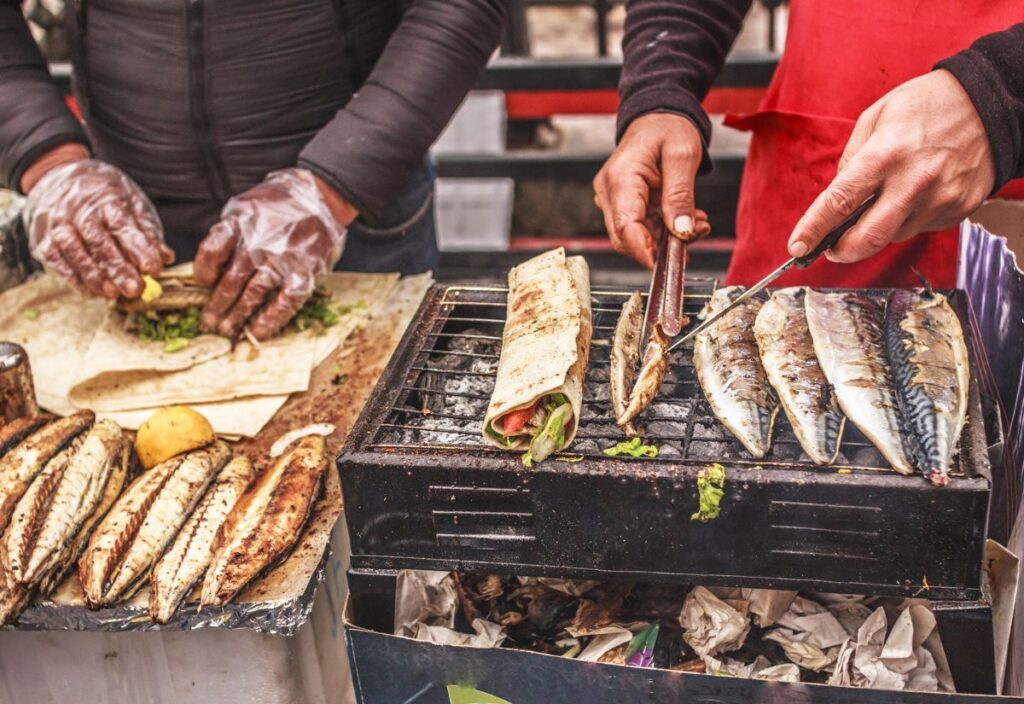Exploring Global Grilling Traditions
As summer temperatures rise, many people in the United States turn to their grills for classic burgers and hot dogs. However, grilling is a universal practice enjoyed in various forms around the world. Each country offers its unique flavors, techniques, and cultural significance when it comes to preparing food over an open flame. Let’s take a journey around the globe to discover some exciting grilling traditions that might inspire you to venture beyond the usual fare.
Further reading: Black Eyed Peas Recipes Vegan Delights
Jamaica: The Jerk Pit Phenomenon
In Jamaica, the art of grilling reaches new heights with the famous jerk pit. The smoky aroma of pimento wood fills the air as roadside vendors fire up their grills from Kingston to Boston Bay. Chicken and pork marinated in spicy scotch bonnet pepper are the stars of the show, offering a vibrant explosion of flavors. While the spice level is intense, some vendors cater to tourists by adjusting the heat. A typical meal is often served with rice and peas or festival, a delightful cornmeal fritter that perfectly complements the dish.
Mexico: Street Style Grilling
Mexico’s grilling traditions vary by region, yet they all share a connection to street food culture. Tacos al pastor, featuring marinated pork sliced from vertical spits, are a must-try, often paired with sweet, grilled pineapple. In northern Mexico, particularly in states like Sonora, carne asada takes center stage at local plazas and roadside stands, where mesquite or charcoal gives the meat its distinctive flavor. Whether wrapped in tortillas or plated with side dishes, the grilled meats are always prepared to satisfy a crowd.
Argentina: A National Asado Ritual
In Argentina, grilling isn’t just a meal; it’s a cherished national ritual. Buenos Aires boasts numerous parrillas where diners can indulge in mouthwatering asado ribs, chorizo sausage, and rich morcilla, all cooked over wood fires. The grilling technique is refreshingly simple—just a sprinkle of salt enhances the natural flavors. On weekends, families gather around public grills or in their backyards, turning the cooking process into a communal celebration filled with fire, conversation, and delectable food.
Türkiye: Grilling as Street Theater
Istanbul transforms into a vibrant display of grilling artistry. The streets near the Galata Bridge are lined with stalls serving grilled mackerel sandwiches stuffed with fresh onions and greens. Just a few steps away, skewers of kofta and sizzling chicken wings share space with blistered corn on the grill. As dusk settles, mobile carts emerge, offering the enticing aroma of roasted chestnuts. The lively atmosphere and continuous activity of the streets perfectly reflect the city’s dynamic grilling culture.
Japan: Precision in Yakitori
Japan’s yakitori showcases the grill as a canvas for culinary precision. Skewers of chicken, from meatballs to thighs, are grilled over hot coals in izakayas and street stalls across Tokyo. The enticing aroma of salt and soy glaze fills the air, inviting passersby to indulge. While traditional vendors often use binchotan charcoal for optimal heat, many have adapted to using gas or standard coal to serve the ever-growing crowds. The menus are simple yet effective, focusing primarily on chicken while occasionally featuring creative modern twists. These savory snacks are best enjoyed leisurely, accompanied by a refreshing beverage like beer or sake.
Philippines: A Coastal Barbecue Culture
In the Philippines, the barbecue scene is as diverse as its landscape. Stalls in Manila and Cebu overflow with the tantalizing scents of grilled pork belly, skewered intestines, and fresh fish. Coastal towns like Batangas and Palawan are known for family beach grills, where the smell of grilled food wafts through the air from sunrise until sunset. A unique treat found in Mindanao and the southern Visayas is ginanggang, grilled saba bananas brushed with margarine and sugar for a sweet finish. The rich variety of flavors reflects the Philippines’ deep cultural ties to both land and sea.
South Korea: BBQ with Soju
South Korean barbecue is an experience that combines flavor with social interaction, especially when grilled at the table. In Seoul, patrons enjoy grilling cuts like galbi, bulgogi, and samgyeopsal, with the latter being a popular choice among locals and tourists alike. The meal is accompanied by crisp lettuce leaves, garlic, gochujang, and rice, allowing diners to create their own perfect bites. To enhance the dining experience, soju flows freely, often complemented by makgeolli, a mildly sweet rice wine that pairs beautifully with the savory dishes.
Thailand: Grilling at Temple Fairs
In Thailand, temple fairs bring grilling to life in the bustling streets of cities like Chiang Mai and Bangkok. Vendors fan the coals beneath skewers of sweet pork, smoky squid, and whole fish infused with fragrant herbs. The enticing scents linger as visitors navigate through the crowds, plates in hand, savoring every bite. Sticky rice provides a hearty base, while a spicy chili sauce adds a zesty kick to the rich flavors.
Vietnam: Fresh and Smoky Grilling
Vietnamese grilling is characterized by its light, smoky flavors. In Hanoi and Ho Chi Minh City, street vendors grill marinated meats, presenting them with fresh herbs, dipping sauces, and thin rice paper for a fun, roll-your-own dining experience. Grilled pork, known as thit nuong, is often served with vermicelli noodles and fresh vegetables, all brought to life with a splash of fish sauce. Markets such as Bến Thành and Dong Xuan are alive with these aromatic offerings, especially during the warmer months when outdoor grilling becomes more prominent.
Conclusion: The Universal Language of Grilling
From quiet coastal barbecues to bustling city stalls, grilling unites flavors across cultures. The choice of ingredients, techniques, and regional spices varies widely, yet the essence remains the same: food brings people together. Each grilling experience reflects local traditions and a sense of community, transforming meals into shared moments filled with joy and connection. Embracing these global grilling traditions can elevate your culinary adventures and remind you that, no matter where you are, the grill serves as a universal symbol of togetherness.

